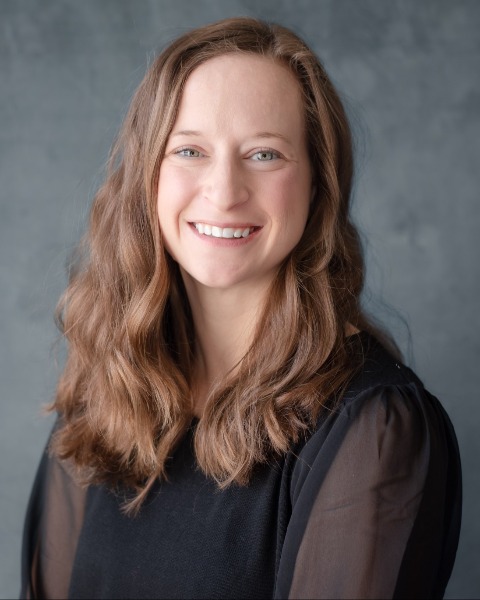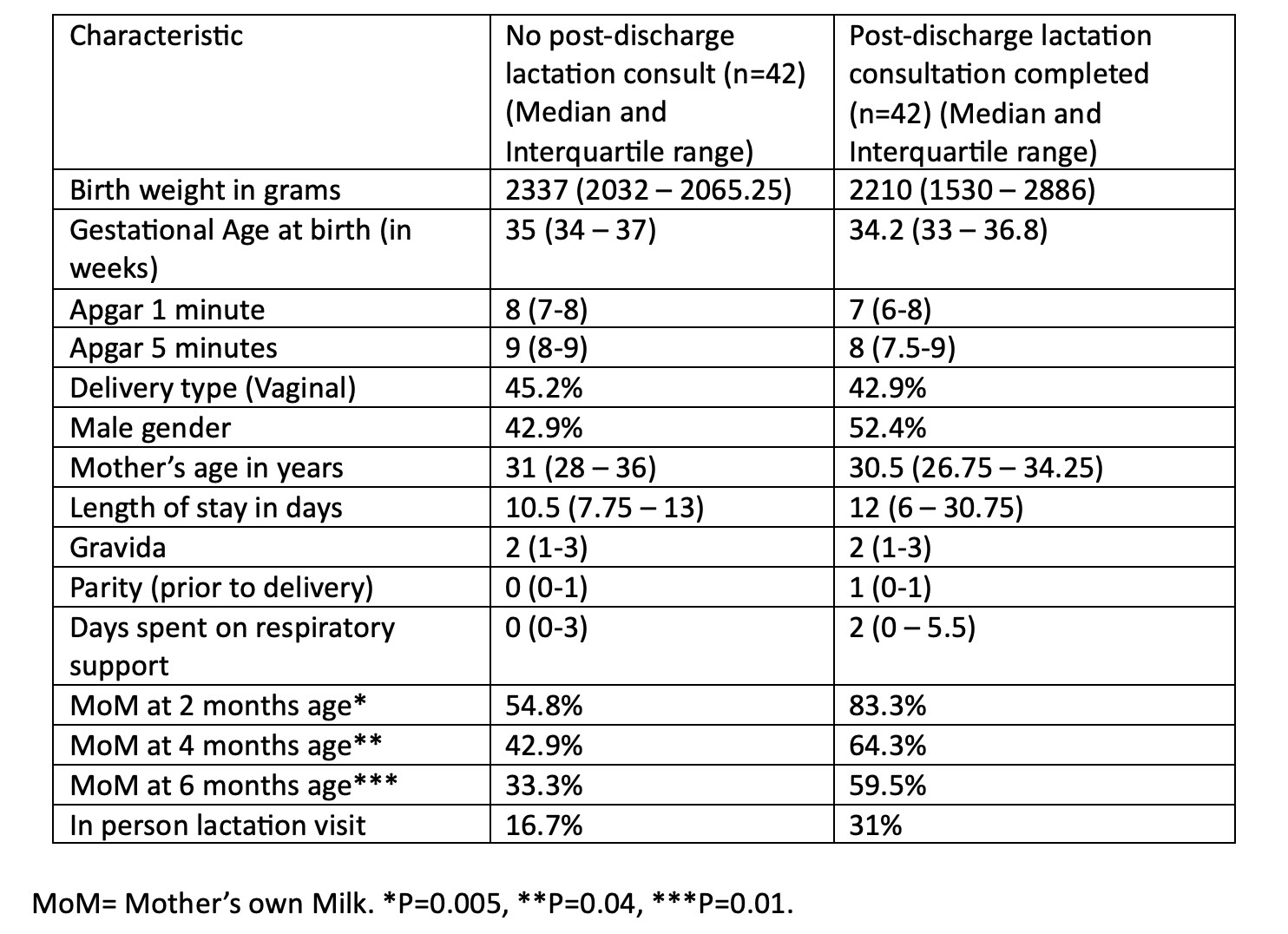Technology
Session: Technology 1
177 - Virtual Screening Lactation Consultation for mother-infant dyad after discharge from the NICU and the Feeding of Mother’s own Milk to the infant at 2-, 4-, and 6-months age.
Sunday, May 5, 2024
3:30 PM - 6:00 PM ET
Poster Number: 177
Publication Number: 177.1997
Publication Number: 177.1997

Amanda Smith, MSN Nursing (she/her/hers)
Neonatal NP
Cleveland Clinic Children's
Medina, Ohio, United States
Presenting Author(s)
Background: Mother’s own milk (MoM) is widely regarded as the best nutrition for infants as it decreases feeding intolerance, late-onset sepsis, sudden infant death syndrome, and mortality. While there is adequate support for breastfeeding in the NICU, lactating mothers may struggle to get help at home after discharge. Certified lactation consultants (LC) started doing virtual consults to answer queries and support lactating mothers 3-5 days after infant’s discharge, as a pilot project, in our hospital in late 2022. LCs referred the mothers with significant issues for an in-person outpatient visit.
Objective: To determine the association between completed post-discharge telemedicine lactation consultation visit by the mother and feeding MoM to infants at 2, 4, and 6 months of age.
Design/Methods: In this Ethics approved retrospective cohort observational study, infants born at any gestation, whose mother was breastfeeding at discharge of the infant, and those who followed up within the same hospital system were included in the study. Mother-infant dyads with NICU stay < 5 days, where breastfeeding was contraindicated and infants with more than 1 readmission or 3 Emergency Department visits in the first 6 months of life were excluded. The dyads were divided into Group A: Mother-infant compliant with one outpatient lactation consultation (born July, 2022 – March, 2023); Group B: Historical group of mother-infant dyads chosen randomly who did not receive outpatient virtual consultation (January 2022 to June 2022).
Results: Eighty-four infants were included in the study with 42 in each group. Three-fourth mothers were compliant for their lactation appointment during study period. No difference in demographics were noted between the groups (Table 1). A significantly increased number of infants received MoM at 2, 4 and 6 months in group A (virtual consultation) compared to group B (no visit) (P=0.005, P=0.04, and P=0.01, at 2, 4 and 6 months, respectively) (Table 1). The gap between the percentage of infants who received MoM decreased over the six months between the two groups but continued to be significant. The number of in-person lactation visits in group A was also higher than group B but the difference was not significant.
Conclusion(s): Infants of mothers who were compliant with a post-discharge virtual NICU follow-up screening lactation consultation were significantly more likely to receive MoM at 2, 4 and 6 months. The increased in-person visits in group A reflects better identification of mothers via screening who needed help.

